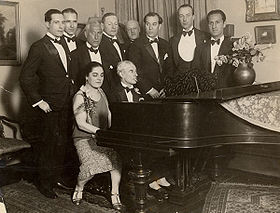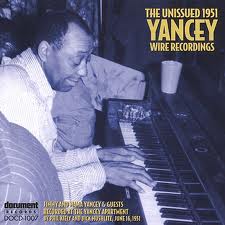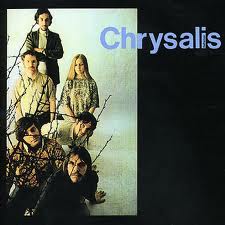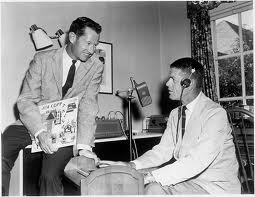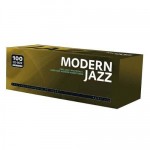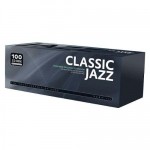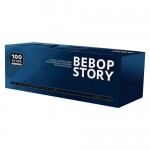Recently at Maverick Concerts the Music Director, Alexander Platt, introduced Ravel’s “Gaspard de la Nuit” and mentioned that Ravel was a “great virtuoso pianist.” This is a common idea but it’s wrong, interestingly wrong.
According to the accounts I have read, Ravel was not a particularly devoted piano student during his conservatory years. What efforts he did extend were mostly towards developing his compositional technique, which remained a lifelong obsession. “My objective,” he once wrote, “is technical perfection. I can strive unceasingly to this end, since I am certain of never being able to attain it. The important thing is to get nearer to it all the time.” Ravel also made unusually detailed studies of the capacities and qualities of musical instruments, which resulted in his becoming a great master orchestrator.
Ravel became merely a competent pianist. He was unwilling to put in the endless hours of practice that would have made him a virtuoso, and we are all the better for that. Certainly it would be useful and inspiring to have recordings of Ravel playing his own piano masterpieces–if he could have played them well. But he couldn’t. He rarely if ever played them in public, and he never played his piano concertos.
Ravel is not the only composer who was unable to play his own compositions. Henry Cowell’s widow once told me that her husband did OK with his avant-garde piano pieces (some of which he recorded successfully) because they weren’t very difficult to play. But he couldn’t play the piano part of his Violin Sonata when it was recorded. There are many stories about how Robert Schumann ruined a potential career as a virtuoso when he damaged his hand using a machine intended to increase the independence of his fingers. But Schumann had never been a serious piano student and never planned on a virtuoso’s career.
In all of these cases, the composers understood the technique of the piano well enough to write in innovative and imaginative ways for it. I can sympathize with how this works. In my own piano playing days, I would sometimes read through such demanding pieces as Prokofiev’s Toccata or Brahms’s arrangement of the Bach Chaconne for left hand alone. I couldn’t have played these pieces if I had practiced them for years. But I was able to learn how they worked.
During Ravel’s lifetime there was enough demand for his music so that recordings by the composer would have sold well. This demand led to two instances I know of in which recordings were deliberately and fraudulently presented as Ravel’s own when they were not. Ravel’s only recordings as a pianist were as accompanist for the singer Madeleine Grey. He never made records of his solo piano works. He did make some piano rolls, a medium in which mistakes were easy to correct. But the pianist Gaby Casadesus admitted years after the fact that when the more difficult Ravel pieces were recorded on piano rolls her husband Robert had done the playing, and the Duo-Art company issued them under Ravel’s name.
Ravel wasn’t a very accomplished conductor, either. He made only two recordings as conductor, and they are valuable for their musical insights. (More on this in a moment.) But when the French branch of HMV recorded his Piano Concerto, with the pianist for whom he had written it (the wonderful Marguerite Long), they hired the Portuguese conductor Pedro de Freitas Branco to conduct the pick-up orchestra and put Ravel’s name on the records as conductor. The deception was uncovered many years later, in the company’s archives. (Freitas Branco was credited as the conductor of the “filler” on side 6 of the 78 rpm set.)
So what is the value of Ravel’s recordings? Obviously, the atmosphere in the song recordings is authentic, and Grey was a superb singer. One of the recordings of Ravel conducting, his “Introduction and Allegro,” is an acoustical recording, made in England in 1923. Its fidelity is limited, and the English musicians involved were probably not very familiar with the music or the style, so it’s not a great experience.
However, Ravel’s other recording, “Boléro,” made in 1930 with the Lamoureux Orchestra, is a revelation. Technically, it’s not very accomplished. Although the orchestra was one of France’s best, it doesn’t play with fine precision, probably due to the limitations of the conductor. But the musical interpretation shows us what Ravel intended in his repetitious work, and it’s not as boring as it usually sounds. Ravel was famously quoted as saying, “There is no music in it.” But the slow tempo he takes allows the scoring to sound in a most convincing way, and the inflections he draws from the solo instrumentalists are fascinating. Apparently the conductor Riccardo Muti feels the same way I do, because his EMI CD of “Bolero” is a close copy of Ravel’s interpretation.
Obviously a composer doesn’t have to be able to play or conduct all of his or her own music. That doesn’t take anything away from the music, of course. I do love to hear composer-virtuosi, like Rachmaninov, Prokofiev, Sarasate, Leon Kirchner, and others, performing their own works. But I’ll never hear Bach perform and I still love his music.
In the late 1970s and early ‘80s, I used to make regular trips from Woodstock to Boston. My girlfriend’s son Greg was attending the New England Conservatory of Music; he’s now a professional guitarist and teacher. I would use his trips to and from Boston as occasions to make buying trips for my classical LP business.
There were many used record stores in Boston, the ultimate college town. (I believe it still has the largest undergraduate population of any city in the U.S.) I got to know most of them, and I set up priorities. Typically, Greg and I would travel up to Boston together. I would drop him off at N.E.C., book a motel room, and go to work.
I would plan my store visits based on the likelihood of finding worthwhile records and on the stores’ schedules, usually ending at one (Zoundz, as I remember) which was open until midnight. Then I’d get some sleep, be at some store when it opened the following morning, shop until I ran out of stores or time, and head for home. When Greg was heading home, I would take off from Woodstock early, shop all day and the following morning and afternoon, and then pick him up.
Some vivid experiences from those days remain with me. When I had available time, for example, I would have dinner at the No Name Restaurant, on the Fish Pier in Boston. In those days it served fabulous seafood in unpretentious surroundings at very low prices. When I didn’t have time for that, there was another good seafood restaurant in Cambridge, the name of which I don’t remember, which was on the same block as a used record store I frequented. Parking around Boston is difficult so making two stops with only one parking spot to find was a bonus. Occasionally I even had time to hear music, once a Boston Symphony concert.
I remember following the histories of some of the record stores. Sometimes they would become more popular, start increasing their prices, and fail. In one case I wound up buying out the classical stock of a store which followed that progression. Others failed because they failed to date and weed their stock, a procedure I learned and followed when I opened my own used LP department in a local used book store. An Internet search reveals that two of the stores I visited regularly, Cheapo Records and Looney Tunes, are still in business.
For some reason, when I think of trips to Boston, my outstanding memory is of the Claverack Diner. Boston to Woodstock is a 200 mile trip, and when I left Boston by myself at 10 p.m. or later I had a hard time getting home in one piece. There was always coffee available at all the rest stops on the Massachusetts Turnpike and the New York Thruway, but driving those roads was so unchallenging that I was always afraid of falling asleep near the end of the trip. So, nearing the end of the trip, I would leave the Mass Pike, cut south on the Taconic Parkway, and then head west on Route 23, meeting up with the Thruway only about 30 miles from my exit at Saugerties.
The Claverack Diner was at a location on Route 23 which was hardly a major traffic crossroads. Yet it was open 24 hours. As I drove my last hour on the Mass Pike, I would be thinking of the Claverack Diner, its harsh-tasting hot coffee, and its fresh-baked pies. A big shot of sugar and caffeine would propel me homeward for the rest of the trip, feeling better than I had most of the way. As diners go, I don’t think there was anything special about the Claverack Diner. But it was an occasional haven for me and I was always grateful to see it.
These days I travel Route 23 occasionally, heading for the Rodgers Book Barn in Hillsdale or for Tanglewood. When I pass by the building that once housed the Claverack Diner, I feel a little pang. The Diner closed down many years ago. The last time I saw the building in use it was a flower shop, and I think that’s closed now also. So is the business I was feeding when I stopped at the Diner.
I’m not completely pleased with what the purchase of a Jimmy Yancey CD revealed about me.
I was looking to acquire more Yancey recordings, no doubt. During a car trip with my wife, I had played several discs from a blues anthology which included some Yancey. Every time he came up, she started tapping her foot along with the music. She responded equally well when I played a whole CD of Yancey for her. (It turns out she likes boogie woogie in general.) But I had only two Yancey CDs.
Does that matter? Yancey is a special case. I think of him as the Thelonious Monk of boogie woogie, a musician who despite an apparently limited technique managed to create compelling music. But unlike Monk, Yancey had a very limited repertoire. Many of his recordings are almost exactly the same music with different titles. One of the Yancey CDs I already had was Vol. 1 of a complete edition of his 78s, which runs to three discs. But there is so much repetition on Vol. 1 that I never felt compelled to buy the other two. (The other one I already had includes several items on which Yancey accompanies his wife in some creaky but tasty blues.)
Still, knowing I didn’t need any more Yancey, I still went looking at listings and found something I could not resist: “The Unissued 1951 Yancey Wire Recordings.” They were made at Yancey’s home, shortly before he died, at a small party. Conversation interferes with some of the music. Some of the recordings were damaged and have a lot of noise on them. And some of the music isn’t even played by Yancey. It’s played by other people who were at the party, the first four items by someone whose name nobody involved in the production could remember.
As soon as I read about this CD, though, I had to have it. I didn’t know about the limitations I’ve mentioned above until I got the disc, but I didn’t care. It was magic, Yancey that nobody had ever heard until this CD was issued. And the idea of wire recordings resonated strongly with me because when I was a kid my family had a wire recorder. I remember it as a low-fi medium, and the recordings on this CD are certainly not state-of-the-art for 1951. But they sound better than I would have expected.
So what does this CD add to my appreciation of Jimmy Yancey? Hardly anything. Actually I got more of interest from the extensive booklet than from the recordings. Yancey’s only known vocal is on one of these items (“Royal Garden Blues,” not typical Yancey repertoire), but it’s nothing special. I just had to have it, though. And having heard it and realized the limitations of its interest–I can’t even play it for my wife, who would probably find it annoying–I’m still not going to get rid of it.
That’s who I am. I’m a collector. I’ve managed to get a little more rational about this in recent years, but not enough.
While looking through my small boogie-woogie collection, though, I did revive my interest in a similar item from the same CD label, Document. It’s “Pete Johnson: The St. Louis Parties of July 30 and August 1, 1954.” Johnson is a very different musician from Yancey, an amazing virtuoso who could seeming play almost anything. On recordings he was typecast as a blues and boogie-woogie pianist, and there’s nobody better. But on these party recordings, Johnson plays a much wider range of music and shows us how good he could be with material like “Stardust” and “Perdido.” (He even plays “Yancey Special,” jokingly including references to other songs.) That’s the kind of revelatory recording that I don’t feel I need any excuses for keeping.
The house on Orchard Lane was for sale, and Anne cooperated graciously with the realtor who was handling the property in arranging showings. When it finally sold, the realtor promised to find us a good place to rent, one with good living quarters and enough space to run my business. The first time she took us up to Stoll Road, in Saugerties, I was intimidated by the curvy, uphill road, which I thought would be hard to drive in snow. It was, and eventually I became accustomed to the two or three days every winter when I was stuck in the house.
But the house itself was ideal. It was roomy enough for both Anne’s and my grand pianos (she put hers in the upstairs apartment). And the basement, the famous basement where the “Basement Tapes” were recorded, had more than enough space for my business needs. Lots more. Also, I learned that after the Band members had left the house, it had been rented by a guitar maker, who had used the basement as his workshop. (I used his worktable as a packing table for years.) This house wants to have music in it, I thought.
The availability of all that space encouraged me to expand my LP stock greatly, and eventually it even filled the garage. I had wonderful times there, the first few years. There were frequent parties with music. I once hosted a house concert of Indian music. I got a lot of work done and met friendly neighbors, among whom I remember most the loony Marion Gold and his caviar and the tall, beautiful cellist Ann Sheldon who played electric music with rock groups and died in a puzzling car crash. My neighbor and friend David turned sour and became impossible, but his wife Geraldine Barton, now remarried, remains one of my closest friends.
My relationship with my landlord at Big Pink wasn’t comfortable. Michael, a bass player, was one of the most unpleasant people I’ve met, and many of my phone conversations with him ended with one of us hanging up on the other. (His wife Elizabeth was usually more reasonable.)
Living in the house for 21 years, I was able to see how little maintenance Michael was willing to do on it. When something needed painting, Michael told me he would pay for the paint. Only. So when he decided to sell the house, although I was in a position to buy it, I decided not to. (He first offered it at a high premium price because it was Big Pink, but got no takers. Apparently nobody wants a house as a souvenir.) It would have taken at least $10,000 in repairs. So I bought another house three miles away, and said goodbye to Big Pink with some regret. I’ve never been back.
Recently I’ve been listening to two Russian classical pianists from very different eras. Vladimir Feltsman is still in his prime. Vladimir de Pachmann was one of the earliest pianists to make records. I love them both.
I was involved in the Vladimir Feltsman story in a small way. After he applied for an exit visa to leave the Soviet Union with his wife and son in 1979, he immediately became a “nonperson.” Not only was the application refused, but his career was shut down. He had already toured outside the Soviet bloc, but foreign booking agents were told he was not available for touring. He was forbidden to perform anywhere for two years, after which he was gradually given demeaning assignments like playing a recital in a kindergarten classroom on an upright piano at 10 a.m. His Russian LPs were suppressed and recordings of his concerts disappeared from the Soviet radio archives.
Various Western musicians took up Feltsman’s cause, without immediate results. Daniel Barenboim organized a tribute to Feltsman at Carnegie Hall, at which he and several other famous pianists performed. For the last number on the program, the spotlight was shone on the vacant piano while one of Feltsman’s recordings played.
As a fortunate byproduct of my work as a classical record dealer, I found two of Feltsman’s suppressed recordings in 1984: one original Soviet LP, the other a reissue on a Spanish cassette. (I have since obtained all of them.) At the time I was doing regular classical music broadcasts over WDST in Woodstock. I told Jerry and Sasha Gillman, owners of the station, that I had these suppressed recordings and wanted to do a special. Jerry suggested we attempt to get an interview with Feltsman. I expressed skepticism, but I should have known Jerry better. He called our local representative, Matt McHugh, who in turn got in touch with the State Department. Eventually we heard from the U.S. Ambassador to the Soviet Union, who turned out to be friendly with Feltsman. Sure enough, we got our interview, recorded off the phone from his apartment in Moscow. The resulting program went out on our station, then WQXR-FM in New York and a little later over the Voice of America.
The president of the closest major educational institution, Alice Chandler of the State University of New York at New Paltz, heard about the broadcast. The following month, she and a group of American university professors traveled to Russia to visit with “refuseniks,” people who had been refused permission to leave the U.S.S.R. Chandler met Feltsman at his apartment, and told him if he could ever leave she would offer him a job at her school. He joked with her that if she could get him a false passport he would go immediately.
He was finally allowed to leave in 1987, due to continuing intervention from our State Department and specifically the Secretary of State George Schultz. Feltsman eventually learned that he and several other refuseniks had been released in exchange for some concession by the U.S., but he never found out what that was.
I was among a group of people who met the Feltsmans when the arrived in the U.S. I remember vividly his four-year-old son Daniel running into the press room at Kennedy Airport bouncing a helium balloon on a string and yelling “Mickey! Mickey!” (It was Mickey Mouse.) I didn’t get to hear Feltsman’s first performance in the U.S., at the White House. (I did eventually get a tape of it for broadcast on WDST, the only U.S. outlet that got to run it.) I did hear his official debut at Carnegie Hall, which confirmed what the recordings had suggested: he was a major pianist, with a wide range of abilities and the versatility to play almost anything convincingly. I was particularly impressed with the way he played excerpts from Messiaen’s “20 Views of the Infant Jesus,” with such color and conviction that the audience was transported.
Over the intervening quarter of a century, I have heard Feltsman numerous times, occasionally in New York, more often at the college. Last weekend, as part of the inauguration ceremonies for the college’s new president, and to celebrate his 25th year there, Feltsman played a brief benefit recital at the college. Perhaps by accident, more likely on purpose, Feltsman invited comparisons with the great Sviatoslav Richter, whom he heard in concert many times. He played Mussorgsky’s “Pictures at an Exhibition,” one of Richter’s most famous triumphs. The two other works on the short program, by Schubert and Liszt, were pieces also included in Richter’s most famous recording of “Pictures” (from 1958 Sofia concerts).
I’ve always admired Feltsman’s playing. As a Bach player, he is simply unequalled among those I’ve heard. One of the many fine features of his Bach is his ability to add embellishments to repeated sections of the music, a necessity in Bach’s day but a rarity in ours. Little improvisations like that were expected in performances up through the time of Mozart and even beyond. We know that Chopin often varied his music when he played it. The few grace notes that Feltsman added to his Schubert Impromptu were nothing radical, but they showed the way he thinks about music–creatively.
Feltsman has never been a “black and white” pianist, as his very colorful Messiane playing demonstrated at my first hearing of him. But after hearing his Liszt and Mussorgsky, I feel he has widened his color pallette over the years. The shading in these works was actually reminiscent of Richter.
Creative interpretation was also a part of the style of Vladimir de Pachmann, who was born in 1848 and began making records in 1907. Pachmann has been one of my favorite pianists since I first heard him, more than 50 years ago, in an LP anthology of great Chopin players of the past.
It’s difficult to listen to Pachmann today. Most of the recordings are acoustical (done through a horn, before microphones came into use). They have limited frequency range and, usually, heavy amounts of surface noise. But that’s never stopped me from marveling at Pachmann’s performances, free in a way that would not be acceptable in today’s concert halls but always convincing and expressive. If I had to use one recording to exemplify eloquence and poetry in classical performance, it would probably be Pachmann’s playing of Chopin’s Nocturne in E Minor, Op. 72, No. 1. Despite the late opus number this is actually early Chopin, published posthumously, and it may not be exactly Chopin’s greatest music. But it’s the best sounding of Pachmann’s recordings, and one of the few among his last discs that shows the pianist completely in control.
You can hear that recording for free on the Internet. But if the idea of hearing romantic piano music (mostly Chopin, but also Liszt, Mendelssohn and others) played by a survivor of the romantic era appeals to you, there is a unique opportunity available now. The Marston label has issued a four-CD set of the complete surviving recordings of Pachmann, including quite a few that were never published on 78s. For years I have been dreaming of owning such a set, and now that it’s available, it has been done the way I wanted to hear it. That Chopin Nocturne, for example, should have been heard in clear, fairly wide-ranging sound. It was published on RCA Victor’s best shellac material (the so-called “Z” pressings). But all the previous reissues of it I have heard were sonically dull, filtered to remove surface noise. Marston’s edition is what I’ve always wanted. And for the asking price, it strikes me as a real bargain.
When I was a small child, in the 1940s, my parents bought me children’s records and I loved them. When I had small children of my own, in the ‘60s, I did the same for them. Most of the records met with indifference. But the records of Jim Copp and Ed Brown became quick favorites. So were the “Dance, Sing and Listen” records of “Miss Nelson and Bruce< [Haack].
I haven’t heard “The Way-Out Record” by Miss Nelson and Bruce, or their “Dance, Sing, and Listen” series, since my kids were small. And I was amused to discover that they have been issued on CD only in Japan. I’ve read somewhere that Bruce Haakc is considered an important pioneer in some kind of electronic music, so it figures.
But last month I was startled to run into “Agnes Mouthwash and Friends,” by Jim and Ed, on a CD at a thrift shop.
My wife and I used to enjoy the Jim Copp and Ed Brown records just as much as our children did. Maybe even more. I remember that they were played frequently, and not just when the kids were listening. Among my own favorites were “The Highway,” a marvelously surreal audio drama, and “Mr. and Mrs. Destitute,” about poor farmers whose refrain ran:
“There isn’t very much to eat.
Tonight let’s cook the mouse.”
Both of these selections are included in “Flibbertigibits on Parade,” Vol. 2 of the Playhouse CD series.
We were obviously not the only family who enjoyed these records. And in recent years, there have been several articles and broadcasts about this duo. There are links to them on the Playhouse Records website. You can even hear some samples of their work, with freshly done animation, on YouTube:
With some trepidation, I played my new copy of “Agnes Mouthwash” for my wife while we were driving in the car. She laughed heartily at most of the material, as I did. There’s something about the combination of home made quality (the originals were all recorded at home) and sophistication that remains fresh and amusing after all these decades.
Ed Brown died in 1978, Jim Copp in 1999. Somebody is continuing with their legacy, though. The Playhouse label CDs recombine material from the individual LPs, which doesn’t matter much, into generous programs. And they are still available. I’m recommending you check out a track or two, even if you don’t have any small children around.
In the fall of 1969, I left my wife and children behind for a month and took a bus trip across America. One of the most memorable events of that month was my encounter with record librarian Charlemaude Curtis in New Mexico.
In those days, Greyhound was selling a 30 day bus pass, and I bought one. It was good for unlimited travel throughout the U.S. and Canada. During the course of the month, I covered approximately 10,000 miles. I later calculated that I spent about a third of my time on buses.
I first went straight across the country to visit my sister-in-law, who was then living in Los Angeles. I wound up spending most of my time visiting my former piano teacher, Joanne La Torra, who had become a close friend. (She made two LPs for the Orion label as Joanne Smith.) From there I went back east to Tucson to visit friends who had a summer house in Phoenicia, near where I lived. My next stop was Fort Worth, where by arrangement I recorded an interview with the pianist Lili Kraus (then teaching at Texas Christuan University), who took me out to lunch at Furr’s Cafeteria. Unfortunately the magazine I did the interview for ceased publication, and the interview was never printed.
From Fort Worth I traveled to Albuquerque, where my uncle Lenny Felberg had recently taken up residence as professor of violin at the University of New Mexico. After that, I went to Seattle, spending a few days with my science-fiction friends F.M. and Elinor Busby and, of course, getting wet. My last stop was in Edmonton, Alberta, where I visited my old friend Calvin Demmon and his wife India. En route home I was stranded in Watertown, NY by a bus strike. My friend Henry Fogel, who lived in Syracuse, drove up and rescued me, and I spent a couple of days with him and his wife Fran before the buses started running again.
I had many memorable experiences during that voyage, but perhaps none stands out as strongly as my encounter with Charlemaud Curtis. At that time, Charlie Curtis–as everyone called her–was an assistant music librarian at the University of New Mexico Library. Since my uncle Lenny and his wife Arlette worked during the day, they needed a place to park me while they were at work. Lenny took me to the UNM Library, where I already knew the librarian, Jim Wright, head of the Fine Arts Library, through the Association for Recorded Sound Collections.
I figured I would just spend my time browsing and listening, but Jim had another idea. The UNM Library had a room full of 78s that had been donated over the years and never sorted or catalogued. Charlie, who had come to UNM after having run her own record store for years, had been agitating to have something done with the 78s. While I wasn’t particularly an expert on 78s, I was already known as a “record expert” in general. Jim and Charlie asked me if I would help Charlie sort through the 78s.
Thus began one of the most entertaining experiences I’ve ever had. Charlie, who was old enough to be my mother, was a lively woman, and she knew a lot about records from her experience running a store that I didn’t know. For example, she explained one thing I’d always been curious about, why the Columbia 78 of “Preludio a Cristobal Colon” by the Mexican microtonal composer Julian Carillo, recorded in Cuba in 1930, was so common. I would have expected an avant-garde piece like that to be extremely rare, but Charlie told me she always sold a few copies in her store at Halloween.
Even in those days, most 78s had already become pretty worthless. We decided early on to keep for the collection only relatively important material which was not available on LP. The large majority of records we didn’t think were worth keeping went onto carts, where they were wheeled out to the open area of the library and offered for sale to faculty and students for ten cents each. I wasn’t there long enough to see how many of them sold but I learned later that quite a few of them were actually bought.
Most of the collection was classical music. However, we found some interesting early recordings of Latino music which were of great interest to the library. One record in particular excited Charlie. It was an acoustical recording which had been made and issued in Albuquerque, and she was convinced that it had been the earliest record made in New Mexico.
I worked with Charlie for three days on the records, and by the third afternoon we had them all sorted. We congratulated each other on a job well done. The records the library would keep were boxed and ready to catalog. The unwanted records were all out of the storeroom. We were left with a small pile of records we had set aside as completely useless, all either broken or obviously worn beyond playability. We smiled at each other, and without a word we started reaching for the records in the discard stack, smashing them on the concrete floor of the storeroom. Then, laughing almost uncontrollably, we went out for a beer.
I saw Charlie one more time, about 20 years ago. My wife Tara and I were in Albuquerque to visit my uncle and my parents, who had recently moved to Albuquerque. Charlie had retired by then, but we called her and got together. She drove us to visit friends at Jemez Pueblo, and Tara bought some pots from the wonderful potter Phyllis Tosa. Driving with Charlie was An Experience, though. She was a speed demon.
Today there is a Charlemaud Curtis Collection of Southwestern Music, Interviews and Programs at the UNM library, including material that Charlie recorded herself. She obviously did a lot of great work for recordings during her career. But I’ll always remember her as Charlie the Record-Smasher.
One summer I attended a huge party in rural Indiana hosted by science-fiction fans and writers Buck and Juanita Coulson. When the party was down to about 20 people, Buck pulled out a book of poems and offered a prize to anyone who could read through one of them without cracking up. Nobody made it.
This event, when I was a teenager, was my introduction to great bad art. The poet, who is still unknown even to most connoisseurs of inadvertent humor, was Violette Peaches Watkins. The book, her second, was “My Dream World of Poetry: Poems of Imagination, Reality and Dreams.” Mrs. Watkins was “a popular radio announcer on Station WHFC, Chicago, and a prominent patron of the arts,” according to the dust jacket. (I’ve guessed this means she was a gospel music DJ, since many of her poems have a religious theme, but I have no evidence.) My friend Marianna Boncek has done some research on Mrs. Watkins and discovered that she was apparently well known in black artistic circles in Chicago.
I searched for a copy of “My Dream World” for four decades, even though I had a photocopy provided to me, years after the party, by Buck. I used to tell people I was confident I would die without ever finding a copy, but I was wrong. Eventually an Internet search turned up two copies from the same seller, and I bought them both. Hey, you never know.
Incidentally, when I first told Marianna about the book and the contest, she told me with great confidence that she was certain she could read one of the poems without problems, having read plenty of awful poems produced by the students she teaches. She got through three lines of Mrs. Watkins and started laughing so hard she couldn’t go any further.
Mrs. Watkins has the qualities required by artistic inadvertent humor: ambition, incompetence, and gradiosity. They’re all necessary, and when done “right” they add up to a kind of anti-genius. I have seen plenty of movies made more ineptly than those of Ed Wood. Mill Creek Video has issued three 50-film collections of amateur horror movies, “Catacomb of Creepshows,” “Tomb of Terrors,” and “Decrepit Crypt of Nightmares.” The ones I’ve watched are incredibly awful but few of them are funny.
Mrs. Watkins’s “best” poems go on for several pages. But I want to quote one complete, so here is one that shows off her typical qualities:
The Cure for Juvenile Delinquency
You must start, from the beginning of time,
Praying hard daily, at least three times,
Thanking Almighty God for what you’ve got,
To be sure He will take care of that.
If your prayers successfully reach God’s throne,
Your child will be trained before it’s born;
For the Almighty God, who made heaven and the universe,
Will guide your child while it’s on this good earth.
Both parents should be faithful, loyal and true,
Because your child will have characteristics of you;
This much you owe to your child before it’s born:
To be brilliant, healthy and have a happy home.
Pray that he will be a blessing to humanity
And won’t lead a life of crime and insanity;
Pray hard that he will walk in God’s light;
Pray that he will always live upright.
And somewhere, sometime, the day will come
You’ll be repaid for the songs you’ve sung,
The prayers you’ve prayed, your toil and patience,
For being faithful and true, and your kind consideration.
There’s no reason to point out all the many reasons why I consider Mrs. Watkins the greatest bad poet I’ve ever read–even funnier than the legendary William McGonagall. All I can say is that if anyone ever finds a copy of her first book, “Violette Peaches’ Book of Modern Poetry for All Occasions,” let me know. I’m offering serious money!

I can think of only two other producers of legendary bad art whose work makes me laugh a lot. One is the singer Florence Foster Jenkins, who in her brief career managed to convulse thousands of music lovers, without ever realizing that people were laughing at her. Jenkins’s rich husband wouldn’t allow her to perform in public. After his death, though, she started a series of salons which eventually grew to concerts in hotel ballrooms and finally, in her last great moment of triumph, a sold-out recital at Carnegie Hall. No doubt such recitals would have become annual events had she not died soon afterwards.
Listening to Mrs. Jenkins carefully–which is, I admit, difficult–you can actually hear some suggestions of musicianship. And she doesn’t sing consistently out of tune. (If she had, she would have been less funny.) But hearing her grasp for the notes in the famous aria of the Queen of the Night from Mozart’s “Magic Flute” is an experience which continues to crack me up even after having heard it for more than 50 years. It’s also fun to hear her accompanist, one Cosme McMoon (his real name!), trying to keep up with her. We are fortunate indeed that Mrs. Jenkins decided to immortalize her art on private recordings, which she sold only directly to individual music lovers after interviewing them and making sure they were sufficiently educated in music to appreciate her work.
Mrs. Jenkins’s recordings are most conveniently available in a reissue from the Naxos label. My friend Gregor Benko’s collection “The Muse Surmounted” includes an interview with McMoon as part of a collection of other bad singers whose work he has enjoyed. One of them is Vassilka Petrova, whom operaphiles generally consider the worst singer to record a complete opera role. (She did two for the early bargain-priced Remington label. Rumor has it that she was married for a time to Remington’s owner.) When I was a dealer in classical LP records, I always rejoiced when I found a Petrova recording. They sold for very high prices. Follow the link above and you will be able to buy all of Petrova’s LP recordings on CD!
Then, of course, there’s the great bad film director Edward D. Wood, Jr. His “Plan 9 from Outer Space” is often cited as the worst film ever made, but it’s definitely not. His first feature, “Glen or Glenda,” is even worse (and perhaps even funnier), and the 1930s films of Dwayne Esper (probably best known for “Maniac”) are certainly worse in all respects. But it’s the grandiose stupidity of Wood’s dialogue that makes his films among the greatest examples of inadvertent humor ever produced. You can demonstrate this by seeing movies like “Orgy of the Dead” or “The Violent Years,” which are hilarious even though Wood only wrote the scripts and did not direct them.
Since most of Wood’s work is now in the public domain, it’s relatively easy to find. Two useful collections of Wood’s worst have now gone out of print, and the new “Big Box of Wood,” as wonderful as it is, doesn’t have “Glen or Glenda” in it. If you’re curious try “Plan 9” or this collection.
What do we gain by laughing at the ineptitude of others? Well, the most useful element I can think of is the way bad art illuminates the difficulties of creating great art. Seeing how badly Wood’s films demonstrate elements of film making we usually take for granted, I realize just how hard it is to make even a competent run-of-the-mill film. But the hell with that. Mostly what we gain are laughs, which are always useful. I still remember the experience of my old friend Sasha Gillman, who unwillingly accompanied her husband Jerry to my house for an Ed Wood Night. (I still do these!) She said she wouldn’t find anything to laugh about in a bad movie, and she wound up laughing so hard she literally fell off the couch.
Wondering what to do with your Christmas bonus or cash gifts? I know how you can get a 500-disc series of jazz recordings for about $500.
This series, entitled “The Encylopedia of Jazz,” is probably the largest-scale recording project ever put together. Experts and collector friends I consulted couldn’t come up with anything in the past larger than the Philips “Great Pianists of the 20th Century,” 100 two-disc sets.
“The Encylopedia of Jazz” is published by Membran, a huge German conglomerate which has issued many super-bargain sets in the past. I own quite a few of its “Quadromania” boxes, four disc sets which I bought for an average of about $12. They include fine selections, mostly of jazz musicians but sometimes classical music, in quite good sound, with good documentation and even rudimentary program notes. Membran also has issued many 10-disc sets, economically packaged in small boxes with the individual discs in strong paper sleeves. These sets come with no documentation at all, just names of performers and titles. I have a wonderful Ella Fitzgerald set in this series, and a box of tango recordings most of which come from 78s. They’re delightful. I had the Miles Davis set also, but I gave it away because I was so frustrated in being unable to find out who was playing on each individual track. (Also, apparently to get around copyright laws dealing with compilations, Davis’s LPs were broken up between different CDs, making for a frustrating listening experience.)
“The Encylopedia of Jazz” was issued in 2008. This leaves me fearful that it could disappear before too long. Membran once had a 168-disc set of ragtime and early jazz, which I frequently saw on eBay. I was determined to get a copy for $100 or less, but I kept being outbid by a few dollars and never got one. Now it’s apparently out of print and being offered for $700. So, when I ran into the new series by accident on eBay, I bought the first volume, “Classic Jazz,” to check it out. The selection and sound quality were good enough so that I quickly picked up the remaining four volumes. Didn’t want them to get away.
I can’t review this series. I’m only halfway through listening to Volume 1, and some of that “listening” has been pretty casual. But I can give you a description and overview of the series.
Each boxed set has 100 CDs. The paper sleeves that hold the discs list the titles, authors, and timings. A booklet with each set has personnel listings and matrix numbers (but not labels or issue numbers). There are no program notes, but every once in a while the compiler has sneaked in a comment (like identifying Louis Armstrong’s first recorded vocal). Each set also comes with a CD-ROM listing the contents of the entire series. Many of the discs are encoded with text information which tells you the name of the set, the disc number, the title of the disc (usually the leader of the group), and the track title. This information is really useful when you’re driving. However, some discs in the first two sets (all I have investigated) lack this encoding, and a few apparently list only the track number, not its title.
Nearly all the discs are devoted to one performer or band, but in the cases of the few compilations the names of the performers are not in the texts. One of the most useful discs in “Classic Jazz” is a collection of very early recordings from New Orleans, all of which are fascinating and most of which are by performers I’ve never heard of. (They must have been recorded by mobile recording units, since there was no recording studio in New Orleans until Cosimo Metassa started his after World War II!) If you’re listening to this disc in the car, you can’t find out who is performing on each track without taking your life in your hands to look at the disc sleeve.
I know one dealer who refused to sell these sets, after they were offered to him at very low prices, because of the hazards of dealing with large sets. Here’s one example: in “Classic Jazz,” disc 58 is supposed to contain recordings by Eddie Lang and Joe Venuti. It’s properly labeled and comes in the right sleeve, but the contents of the disc is actually identical to that of disc 69, a Bix Beiderbecke collection (which also appears properly on disc 69). I wrote to Membran asking for a replacement disc but got no answer, so the error was probably never corrected. I can only imagine what this dealer would have gone through getting back the whole set because of this error and being unable to do anything about it. Also, unless you put the box in your listening room and the discs never get far from their box, there’s an excellent chance that a disc or two will stray and be missing for a while or forever. My own “Classic Jazz” disc 11 has gone missing and I’m still looking for it.
Another drawback: while these boxes aren’t gigantic for 100-disc sets, they aren’t as economical as they could have been. Instead of lining all the discs up in a row, they are presented in three mini-browsers, each allowing enough room to flip through the discs. This format makes it easy to locate a given disc, but it also means each one of the boxes take up lots more space than Brilliant Classics’ 170-disc set of the complete Mozart.
There are two peculiarities of the Encyclopedia of Jazz which may affect some potential listeners one way or the other. The first is the inclusion of alternate takes. There are many of them. The disc of the earliest Duke Ellington even has a couple that were not in the Classics label’s coverage of the same period. When I get to hear alternate takes of great soloists like Louis Armstrong or Charlie Parker, I can definitely enjoy their different responses to the same tune. But the great majority of these alternate takes don’t feature outstanding improvisors, and I find hearing almost identical versions of the same arrangement two or three times unilluminating. Also, strangely, the producers of these sets allow very little time between tracks. The industry standard is usually 5 or 6 seconds. On these discs, it’s about a second. I’ve gotten used to this but it’s still not my preference.
When I first saw the listings of these sets, I was skeptical about the sound quality. When I started listening to them, I became skeptical about their origins instead. While they aren’t the absolute ultimate in transfer work–the early King Oliver sides, for example, aren’t quite as vivid as they are in the Off the Record/Archeophone set–they are mighty damn close. I spent some time trying to figure out what label or labels Membran had gotten its material from. But several factors, including credits to collectors in the booklets coming with the later sets, have left me fairly certain that Membran has done its own transfers. How the label managed to compile this amazing collection of material–approximately 10,000 sides!–I will never understand. But it does seem that the series has been compiled and transferred from scratch. (Sorry!)
Glancing through the contents of all five sets, I am fairly impressed with the quality of the selections. The “Big Band” set was the most pleasant surprise. I was afraid it would be full of non-jazz blandness like Glenn Miller, but there’s only one Miller disc, and lots of Fletcher Henderson, Duke Ellington, and Count Basie. Some of the “Classic Jazz” discs might seem like wastes of time, and my real introduction to “Red” Nichols demonstrated why my friend Tom Piazza’s “Guide to Classic Recorded Jazz” dismisses him as “much-recorded” with no further discussion. But the Goofus Five gets two discs, 25 tracks each, and while they’re not great music they are very entertaining, perfect driving music.
There is one very major drawback to the selections. The series should have been titled, “Encyclopedia of Instrumental Jazz.” Singers appear only incidentally, if they performed with bands that are otherwise included. There are no discs devoted to Ella Fitzgerald (as I mentioned above, Membran has already issued a ten-disc set of her, so they had the material), Billie Holiday, Sarah Vaughan, or any other singers. So what did I want, a sixth set of great singers? Maybe. Also, the compilers have gone out of their way to avoid piano solos. There’s a group of Earl Hines solos on one of his discs, but the early Jelly Roll Morton collections leave out his fabulous 1923-24 solo sides completely. I haven’t noticed any solos by Fats Waller or James P. Johnson either.
While none of these sets offers comprehensive coverage of its topic, most of them are pretty thorough. I can’t think of a major artist who is omitted, although no doubt a real jazz expert could. The “Modern Jazz” set is more of a sampler than the others, including relatively small selections of some major artists. (The one disc devoted to Monk presents his album with Art Blakey and the Jazz Messengers, one of the least characteristic of his recordings and one of my least favorite.)
So, accepting all these shortcomings, do you still want to fill up about seven feet of shelf space with these boxes? I expect them to be keeping me company for the rest of my life, and I’m sure that although I’ll play through every disc in the years to come, I’ll never have enough time to absorb all the material. I’m still glad I have them. So I’m going to tell you how I recommend buying them. But let me add that you might want to keep an eye on eBay’s auction listings. As I write, used copies of all five boxes are on offer, and the high bid on each is $75, but they have only a few hours to run and will be gone by the time this posts. Still, they could show up again. For more reliable purchases, a combination of Amazon and eBay will serve you best:
Classic Jazz: available through Amazon for $81.31 (prices listed include shipping).
Big Bands: available through Amazon for $80.00
Swing Time: available through eBay for $149.99 “or best offer.” Also available new or used from amazon
Bebop Story: available through Amazon for $80.33.
Modern Jazz: available through eBay for $199.99 “or best offer,” Amazon for $165.74.
I don’t know why the “Modern Jazz” set is offered at so much higher a price. However, I tried making “best offers” on the sets I bought (from a seller in Germany, who charges no additional shipping). I got “Swing Time” for $120, “Modern Jazz” for $125. My total outlay for the entire series was just a bit over $500.
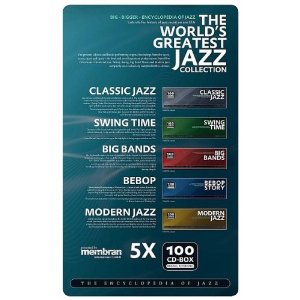
The entire set is available from amazon, under the title “The World’s Greatest Jazz Collection”
My specialized knowledge of Christmas music came about because I am Jewish. In 1980, my first year on the air at WDST in Woodstock, the management asked for a volunteer to run the Christmas eve airshift. Nobody else wanted to do it; they all had places to be on Christmas eve. I didn’t care, so I volunteered.
When I do things, though, I like to do them right. So, with several weeks’ notice, I set about putting together a collection of good Christmas music. Since my own tastes are very eclectic, I decided that the widest variety of music I could play would make for the most fun. And anyway, who would be listening to the radio on Christmas eve?
So, I searched my memory for outstanding examples of Christmas music. I’ve always loved the gorgeous melody and irregular phrases of “Lo How a Rose” by the great early baroque composer Michael Praetorius, so that went in. “Silent Night,” of course, is a gorgeous inspiration, the only surviving composition of Franz Xaver Gruber (1787-1863). But I had to find a non-corny performance of it. One of my favorite Christmas song recordings ever is a version of “Children Go Where I Send Thee,” retitled “Holy Babe,” sung by a group of convicts at Cumins State Farm, Arkansas, in 1942, one of Alan Lomax’s field recordings. It’s still been issued, as far as I know, only on a Library of Congress LP called “Negro Religious Songs and Services,” but I had a copy. (Because it runs so long, the original recording was on two 78 rpm disc sides, and that division was preserved on the LP dubbing. But someone at the station copied it onto an open reel tape for me and eliminated the break between sides, and I used that for the next decade.)
When the evening arrived, I went on the air at 7 p.m., prepared to go until midnight with the material I had on hand. But I also took requests from listeners, and as long as I thought they were decent enough music, I played them also.
It turned out, to my surprise, that quite a few people were listening, decorating their trees, wrapping presents, and doing other typical Christmas Eve activities. While a few callers didn’t like going from Gregorian chant to Ella Fitzgerald, most people enjoyed the program. I wound up doing a Christmas Eve program every year during my eleven years on WDST. I didn’t always manage to make time for my favorite Christmas work, the “Midnight Mass” of Marc-Antoine Charpentier (based on old French carols). But I played it most years, and I played “Holy Babe” every one of those eleven years. Sometimes people even called to make sure I would have it on before they had to go to sleep. I continued to take requests, but there were some things I would not play. “Grandma Got Run Over by a Reindeer” was one of them.
It was during those years that I became acutely aware of how little many “Christmas” songs have to do with Christmas. And fewer still are “Christmas carols,” a term that sometimes gets applied even to such non-Christmas winter songs as “Baby, It’s Cold Outside” and “Jingle Bell Rock.”
A carol is a “joyful religious song celebrating the birth of Christ,” according to Dictionary.com. “Rudolf the Red-Nosed Reindeer” is not by any stretch of the imagination a Christmas carol. It is, in its oblique way, a Christmas song, since in the U.S. we have come to accept the whole mythology of Santa Claus and his sled drawn by reindeer (presumably the wildlife normally found closest to the North Pole capable of pulling anything heavy). That image doesn’t fly in most other countries, but I’m not trying to become a cultural dictator so I’ll accept Christmas any way we want it here in the U.S.
Still, there are many, many songs typically played at Christmas time which have nothing to do with Christmas in any way. Here are some of what I call Winter Songs which have no Christmas relevance at all:
Jingle Bells
Sleigh Ride
Let It Snow!
Winter Wonderland
Frosty the Snowman
All of these appear (one of them twice) on the latest edition of an Ella Fitzgerald Christmas compilation, “Ella Wishes You a Swinging Christmas.” There is no singer I esteem more than Ella Fitzgerald. But she either she didn’t know the difference between Christmas carols and winter songs or she didn’t care.
